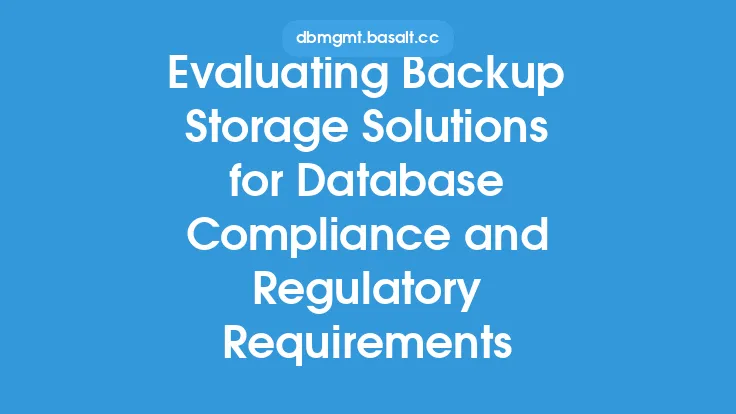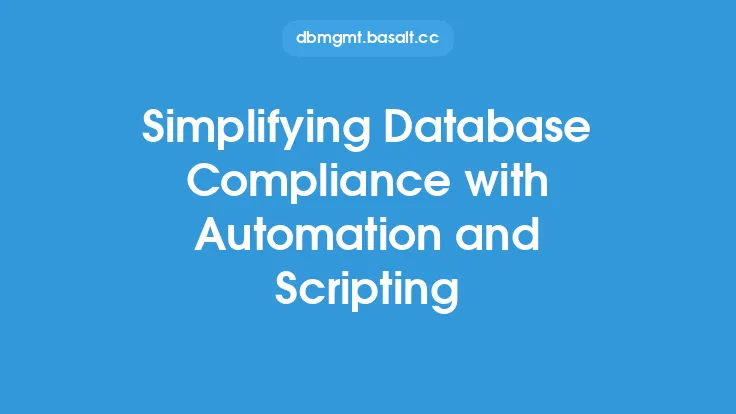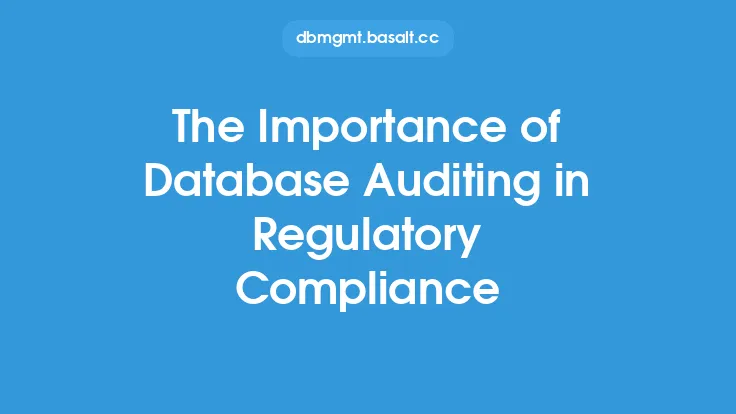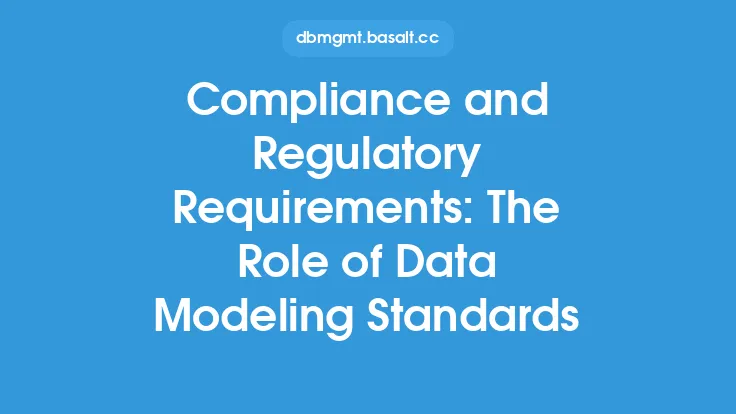Compliance with database standards is a critical aspect of database administration, as it ensures that databases are designed, implemented, and maintained in a way that meets regulatory requirements and industry best practices. Database standards provide a framework for ensuring data consistency, accuracy, and reliability, as well as protecting sensitive information from unauthorized access. In this article, we will explore the regulatory requirements and benefits of compliance with database standards.
Introduction to Regulatory Requirements
Regulatory requirements for database compliance vary depending on the industry, location, and type of data being stored. For example, organizations that handle credit card information must comply with the Payment Card Industry Data Security Standard (PCI DSS), while those that handle healthcare information must comply with the Health Insurance Portability and Accountability Act (HIPAA). Other regulations, such as the General Data Protection Regulation (GDPR) and the California Consumer Privacy Act (CCPA), also impose specific requirements on database management and security. Compliance with these regulations is essential to avoid fines, penalties, and reputational damage.
Benefits of Compliance with Database Standards
Compliance with database standards offers numerous benefits, including improved data quality, increased security, and enhanced performance. By following established standards, organizations can ensure that their databases are designed and implemented in a way that supports data consistency, accuracy, and reliability. This, in turn, can lead to better decision-making, improved customer satisfaction, and increased competitiveness. Additionally, compliance with database standards can help organizations to reduce the risk of data breaches, cyber-attacks, and other security threats, which can have significant financial and reputational consequences.
Technical Requirements for Compliance
From a technical perspective, compliance with database standards requires a range of measures, including data encryption, access controls, and auditing. Data encryption, for example, is essential for protecting sensitive information from unauthorized access, while access controls ensure that only authorized personnel can access and modify data. Auditing, on the other hand, provides a record of all database activities, allowing organizations to track and monitor data access, modifications, and other events. Other technical requirements for compliance include data backup and recovery, disaster recovery planning, and regular security testing and vulnerability assessments.
Industry Standards for Database Compliance
Several industry standards and frameworks provide guidance on database compliance, including the National Institute of Standards and Technology (NIST) Cybersecurity Framework, the International Organization for Standardization (ISO) 27001 standard, and the Database Security Standards (DBSS) framework. These standards and frameworks provide a set of best practices and guidelines for ensuring database security, integrity, and availability, and can be used to support compliance with regulatory requirements. Additionally, organizations can use industry-recognized certifications, such as the Certified Information Systems Security Professional (CISSP) and the Certified Database Administrator (CDA), to demonstrate their commitment to database compliance and security.
Best Practices for Achieving Compliance
Achieving compliance with database standards requires a range of best practices, including regular security testing and vulnerability assessments, data classification and categorization, and employee training and awareness. Regular security testing and vulnerability assessments, for example, help to identify and remediate security weaknesses and vulnerabilities, while data classification and categorization ensure that sensitive information is properly protected. Employee training and awareness, on the other hand, are essential for ensuring that personnel understand the importance of database compliance and security, and are equipped to handle sensitive information in a secure and responsible manner.
Challenges and Opportunities
Despite the benefits of compliance with database standards, several challenges and opportunities exist. One of the main challenges is the complexity and cost of implementing and maintaining compliance measures, particularly for small and medium-sized organizations. Additionally, the rapidly evolving nature of regulatory requirements and industry standards can make it difficult for organizations to keep pace with changing compliance requirements. On the other hand, compliance with database standards can also provide opportunities for organizations to improve their overall security posture, reduce the risk of data breaches and cyber-attacks, and demonstrate their commitment to protecting sensitive information.
Conclusion
In conclusion, compliance with database standards is a critical aspect of database administration, as it ensures that databases are designed, implemented, and maintained in a way that meets regulatory requirements and industry best practices. By following established standards and frameworks, organizations can ensure data consistency, accuracy, and reliability, while also protecting sensitive information from unauthorized access. While challenges and opportunities exist, the benefits of compliance with database standards make it an essential investment for organizations of all sizes and industries. By prioritizing database compliance and security, organizations can reduce the risk of data breaches and cyber-attacks, improve their overall security posture, and demonstrate their commitment to protecting sensitive information.





